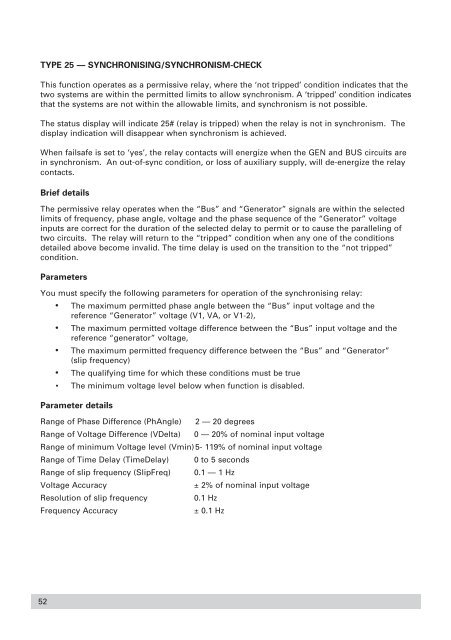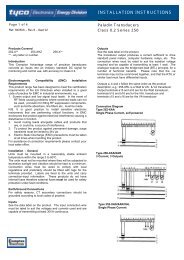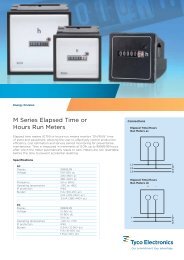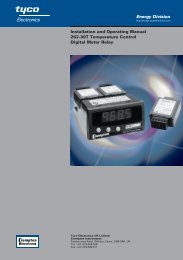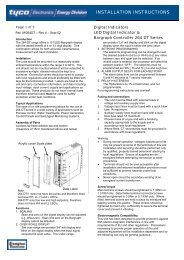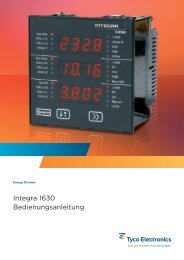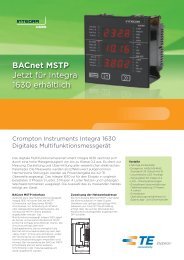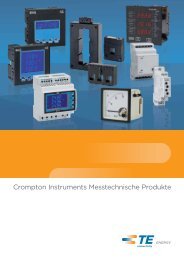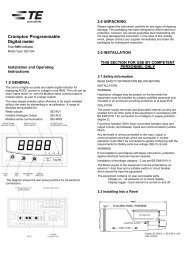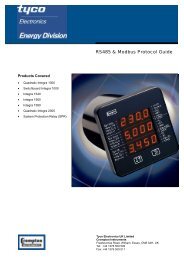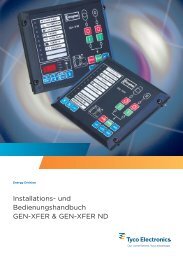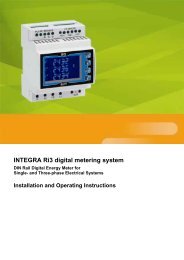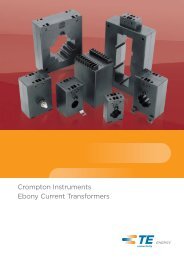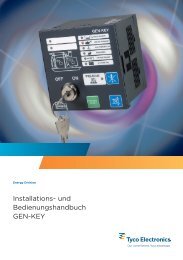Installation and Operating Instructions - Crompton Instruments
Installation and Operating Instructions - Crompton Instruments
Installation and Operating Instructions - Crompton Instruments
Create successful ePaper yourself
Turn your PDF publications into a flip-book with our unique Google optimized e-Paper software.
TYPE 25 — SYNCHRONISING/SYNCHRONISM-CHECK<br />
This function operates as a permissive relay, where the ‘not tripped’ condition indicates that the<br />
two systems are within the permitted limits to allow synchronism. A ‘tripped’ condition indicates<br />
that the systems are not within the allowable limits, <strong>and</strong> synchronism is not possible.<br />
The status display will indicate 25# (relay is tripped) when the relay is not in synchronism. The<br />
display indication will disappear when synchronism is achieved.<br />
When failsafe is set to ‘yes’, the relay contacts will energize when the GEN <strong>and</strong> BUS circuits are<br />
in synchronism. An out-of-sync condition, or loss of auxiliary supply, will de-energize the relay<br />
contacts.<br />
Brief details<br />
The permissive relay operates when the “Bus” <strong>and</strong> “Generator” signals are within the selected<br />
limits of frequency, phase angle, voltage <strong>and</strong> the phase sequence of the “Generator” voltage<br />
inputs are correct for the duration of the selected delay to permit or to cause the paralleling of<br />
two circuits. The relay will return to the “tripped” condition when any one of the conditions<br />
detailed above become invalid. The time delay is used on the transition to the “not tripped”<br />
condition.<br />
Parameters<br />
You must specify the following parameters for operation of the synchronising relay:<br />
●<br />
The maximum permitted phase angle between the “Bus” input voltage <strong>and</strong> the<br />
reference “Generator” voltage (V1, VA, or V1-2),<br />
●<br />
The maximum permitted voltage difference between the “Bus” input voltage <strong>and</strong> the<br />
reference “generator” voltage,<br />
●<br />
The maximum permitted frequency difference between the “Bus” <strong>and</strong> “Generator”<br />
(slip frequency)<br />
●<br />
The qualifying time for which these conditions must be true<br />
• The minimum voltage level below when function is disabled.<br />
Parameter details<br />
Range of Phase Difference (PhAngle) 2 — 20 degrees<br />
Range of Voltage Difference (VDelta) 0 — 20% of nominal input voltage<br />
Range of minimum Voltage level (Vmin)5- 119% of nominal input voltage<br />
Range of Time Delay (TimeDelay) 0 to 5 seconds<br />
Range of slip frequency (SlipFreq) 0.1 — 1 Hz<br />
Voltage Accuracy<br />
± 2% of nominal input voltage<br />
Resolution of slip frequency<br />
0.1 Hz<br />
Frequency Accuracy<br />
± 0.1 Hz<br />
52


